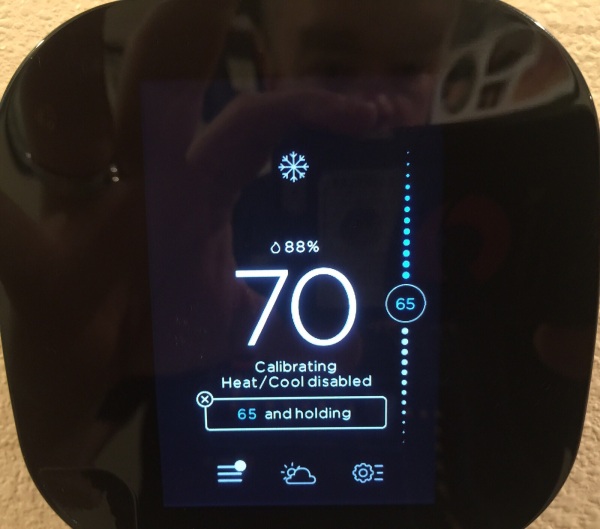With the release of iOS 10, and homekit becoming a little more mainstream, I have finally begun to really take advantage of my homekit enabled devices. It has been an interesting process, but I remain hopeful.
I wrote previously about my experience with my Ecobee3 Thermostat. I purchased it instead of a competitor because of homekit specifically. When I installed it, I didn’t really have a solid understanding of how homekit worked, and honestly didn’t take the time to research. It worked through the app, and we were happy.

Recently on the Home On podcast #075, Richard Gunther had the CEO of iDevices, Chris Allen, on his podcast to discuss the state of homekit among other things. During the podcast Chris offered a limited giveaway of his companies connected switch, which I was fortunate enough to be a part of. I decided to use it for the plug controlling our Pond pump, replacing an analog dial controller which always seemed to lose time somehow.
 When I went to setup the switch, just prior to homekit, I couldn’t figure out why it was so spotty when I joined it to the isolated device wireless network I previously discussed. When I added it to the primary network it worked well, and suddenly siri integration worked. Then I tried to use siri with my Ecobee3 Thermostat, which failed because, you guessed it, it was on the isolated network.
When I went to setup the switch, just prior to homekit, I couldn’t figure out why it was so spotty when I joined it to the isolated device wireless network I previously discussed. When I added it to the primary network it worked well, and suddenly siri integration worked. Then I tried to use siri with my Ecobee3 Thermostat, which failed because, you guessed it, it was on the isolated network.
This lead me to the whiteboard where I started digging deeper into how airplay, airprint, bonjour, and most of the other apple protocols work. It occurred to me if apple is using MDNS for almost everything else, that would be the logical way for homekit to work, and MDNS requires that devices be on the same network segment. (Yes I could have just read the instructions, but I am a guy.) Once I placed all homekit devices on the same network, everything worked fine, siri was responsive most of the time, and with iOS 10, the home app was generally functional.
I have noticed that devices tend to stop responding sometimes, and need to be power cycled. I am assuming this has something to do with the wireless, although the signal is not the issue. There have also been a few oddities with devices not wanting to retain their config, but that may have been something in the setup I missed.
If I didn’t have so many apple devices I am not sure I would have gone the homekit route, in favor of more amazon alexa or google home ecosystem devices, but the simplicity of apple devices, as usual, is unsurpassed. The integration will continue to improve, but for the price, homekit has me hooked for now.